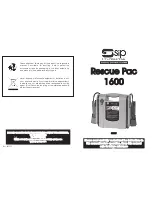
!"#$%&#'()*+,$-)#.$%/0*1$234$5/67("*$8/7*"$9:;;1<$
=/#:>*)6$?:>@*"$AB33CC$$$$$$$$$$$$$$$$$$$$$$$$$$$$D'&;6*"$I.$8&E*$J.
F*G.$H
6.
Do
CHECK
ALL
CABLE
AND
QUICK
-
DISCONNECT
FITTINGS
to
insure proper seating.
7.
Do
KEEP
PROTECTIVE
COVERS
ON
THE
MOTOR
CABLE
CONNECTORS
when not in use.
8.
Do
wear approved safety glasses with side shields.
9.
Do
use protective screens or barriers to protect from
flash and glare. The intense light associated with arc
welding can cause damage to the retina of the eye, while
infrared radiation may damage to the cornea and result
in the formation of cataracts.
Invisible ultraviolet light (UV) from the arc can cause
"
arc eye
" or "
welder's flash
" after even a brief
exposure (less than one minute). The symptoms of arc
eye usually occur many hours after exposure to UV light,
and include
a feeling of sand or grit in the eye,
blurred vision, intense pain, tearing, burning, and
headache
.
The arc can reflect off surrounding materials and burn
co-workers who work nearby. About half of welder's flash
injuries occur in co-workers who are not welding. Welders
and cutters who continually work around ultra violet
radiation without proper protection can suffer
permanent
eye damage
.
10.
Do
wear welding goggles or suitable eye protection
when working around a welding arc.
Exposure to ultraviolet light can also cause
skin burns
similar to sunburn, and increase the welder's risk of
skin
cancer
.
11.
Do
wear gloves and protective clothing to prevent
burns from hot surfaces and from UV exposure.
12.
Do
keep your head out of welding fumes. Do not
breathe fumes.
13.
Do
use a respirator if ventilation is not good.
14.
Do
read Material Safety Data Sheets (MSDS) and the
manufacturer’s instructions for metals, consumables,
solvents etc.












































